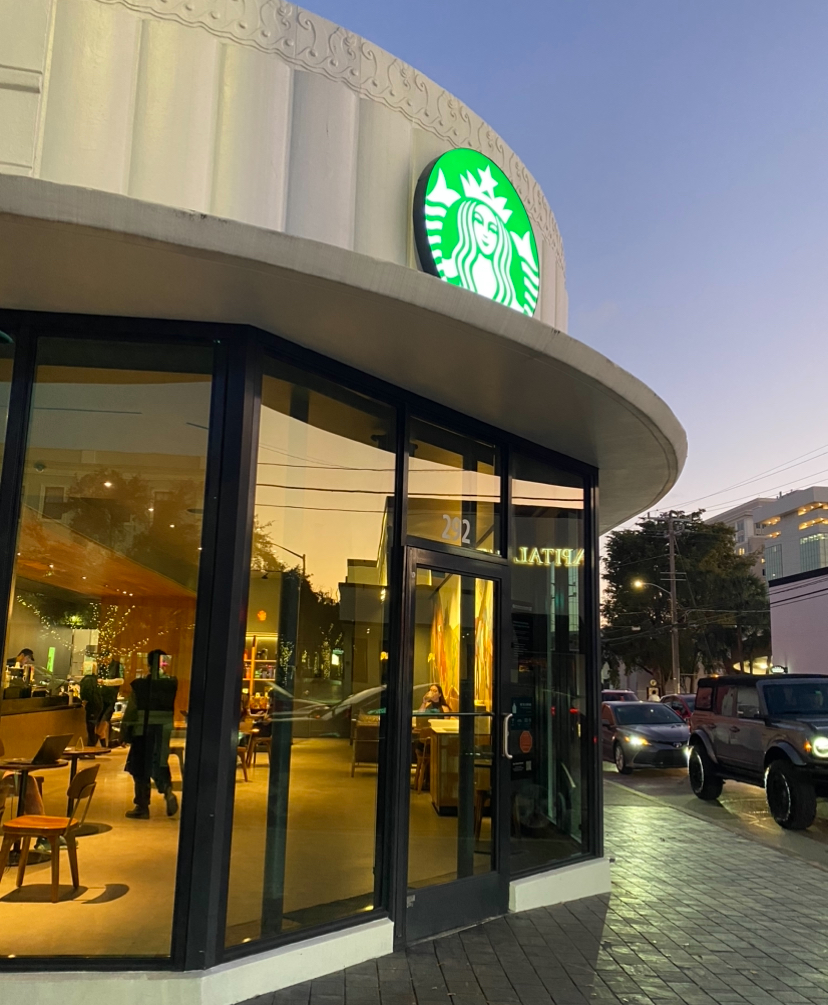Starbucks recently implemented different procedures at their outlets to include no free water, no free pup cups, no sitting in the store unless you buy something, and no access to the bathroom unless you make a purchase.
Enacted January 27, Starbucks’ new requirements are a dramatic reversal to their original 2018 open-door policy which allowed non-paying individuals access their facilities.
“My store hasn’t fully implemented those policies yet for which I am grateful, but they have not been implementing it because the store gets really busy,” said senior Katerina Garcia, who works part-time as a Starbucks barista.
Starbucks has discontinued offering free water cups and complimentary “pup cups” (small cups of whipped cream for dogs) with these items now available only with a purchase.
These policy changes are part of Starbucks’ “Back to Starbucks” strategy which has aimed to enhance the in-store experience for paying customers and address safety concerns. Additionally to these steps, Starbucks is also removing 30% of the items from its menu.
”I think that it’s a short-term view because it’s going to push away costumers, and it’s going to hurt their image,” said Mr. Micheal Carey of the Math Department.
By doing this, the company will concentrate on its most popular and essential products, like classic coffee drinks, teas, and pastries, rather than offering a wide variety of less frequently ordered items.
This strategy can help improve efficiency, speed up service, and reduce costs, all while focusing on what customers buy the most.
Keep in mind that while these policies are being implemented company-wide, individual in-store practices may vary, meaning that the new policies may not be fully implemented at some locations. It’s advisable to check with your local Starbucks for specific details.
”I personally believe that the new Starbucks’ policies are understandable but also uselessly made. Starbucks corporations could be creating rules that actually do something for the company or the customers rather than taking away a small cup of whip cream. I understand the no bathroom policy, but the others don’t make any useful changes,” said sophomore Isabella Iamunno.
By restricting restroom and seating access, Starbucks might have been trying to aim to create a more comfortable, less crowded environment for paying customers.
This approach just might appeal to customors looking for a quiet space to work or relax without the distraction of non-paying visitors occupying tables.









